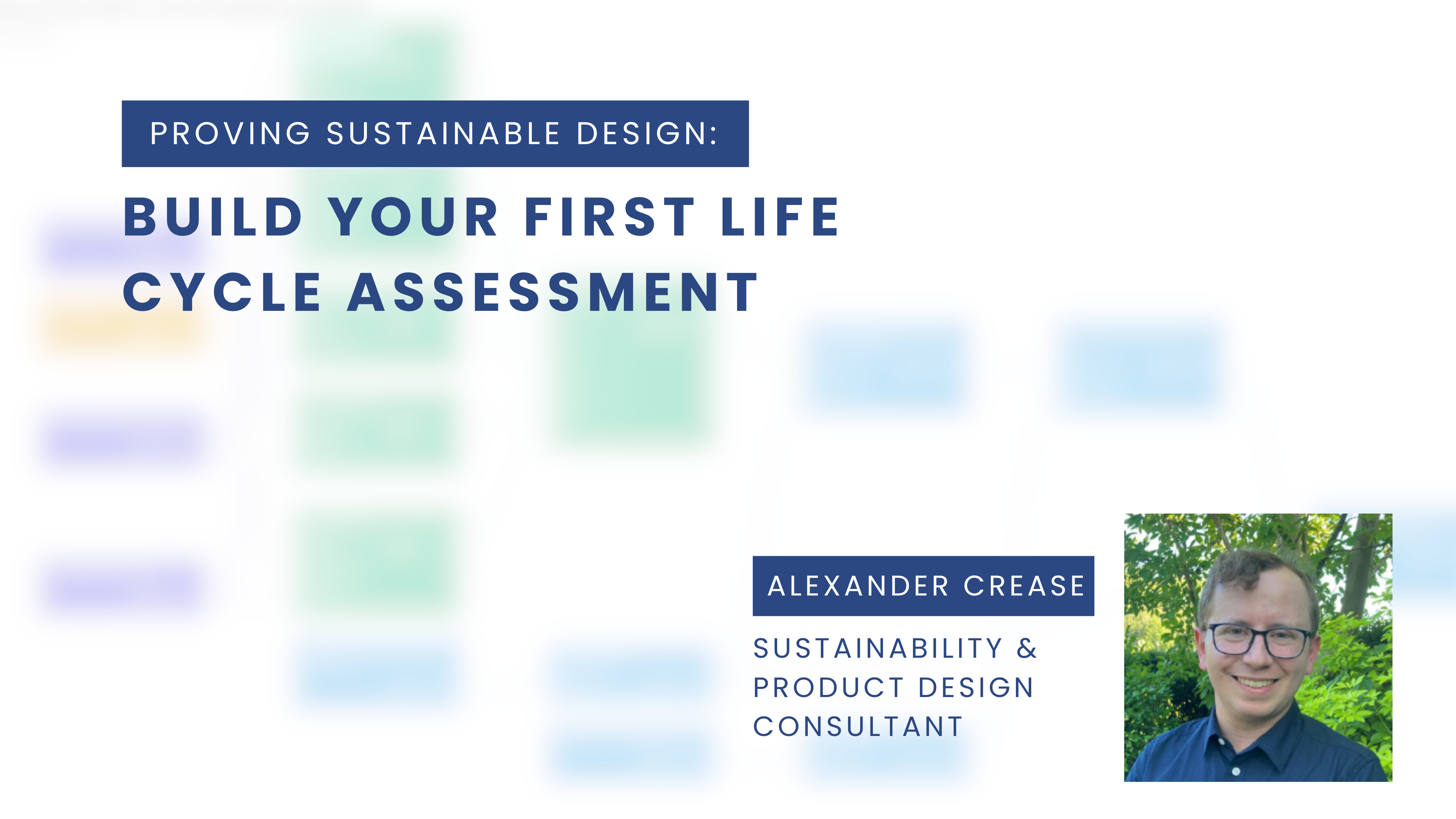Proving Sustainable Design: Building Your First LCA in CarbonGraph

👉 Access the Full Webinar Recording Here
At CarbonGraph, we believe that every product tells a story—about the materials it’s made from, the processes that shaped it, and the impact it leaves behind. Life Cycle Assessments (LCAs) help make that story visible.
LCAs are becoming a core part of modern design and engineering workflows, especially at the earliest stages of product development. Why? Because design decisions made during these early phases can determine up to 80% of a product’s total environmental impact. That means the sooner you measure, the more impact you can reduce.
Why LCAs Matter
LCAs go beyond carbon footprints. They provide a full-spectrum view of a product’s environmental performance—across water use, energy demand, toxicity, and more. But most importantly, they enable better decision-making.
Procurement teams, regulators, and sustainability-minded buyers are increasingly asking for evidence. Whether it’s to qualify for Amazon’s Climate Pledge, win government contracts, or meet investor expectations, companies need data-backed answers to: How sustainable is this product, really?
With CarbonGraph, you can deliver those answers quickly—without waiting weeks for an outsourced report. Our AI-powered platform makes it easy to model environmental impacts, compare design options, and surface insights when it matters most: during design.
How an LCA Works
A Life Cycle Assessment models the environmental impact of a product from raw material extraction to end-of-life. This includes:
- Material sourcing
- Manufacturing and assembly
- Distribution and use
- End-of-life or recycling
CarbonGraph simplifies this process with built-in, peer-reviewed data libraries (like the Federal LCA Commons) and user-friendly modeling tools. You can build screening-level assessments in minutes or dig into detailed gate-to-gate models when precision counts.
A Real Example: The Toothbrush
Let’s say you’re designing a toothbrush. With CarbonGraph, you could:
- Model materials like nylon for bristles and polypropylene for the handle
- Estimate manufacturing energy, such as injection molding electricity use
- Account for use-phase behavior, like daily water usage during brushing
- Assess end-of-life options, from landfill to recycling
You’d quickly see which decisions—like switching to recycled plastic or changing the packaging—have the biggest impact. And just as importantly, you’d be able to share that impact with procurement teams, retailers, or internal stakeholders through beautiful, exportable dashboards or EPD-ready reports.
The Business Case for LCAs
LCAs aren’t just good for the planet—they’re good for business. Companies using CarbonGraph have:
- Reduced costs by identifying energy and material efficiencies
- Won deals by meeting supplier sustainability requirements
- Created better products by catching environmental hotspots early
- Streamlined EPD creation, turning complex reporting into repeatable workflows
From Fortune 500 manufacturers to startups in our accelerator program, we’ve seen how embedding LCAs into design workflows helps teams meet sustainability goals and move faster.
Conclusion
LCAs are no longer optional—they’re essential tools for anyone designing or manufacturing physical products. With CarbonGraph, the LCA process is no longer a burden. It’s a strategic advantage.
Whether you're a sustainability analyst modeling complex assemblies or a designer exploring new materials, CarbonGraph equips you with the insights to design better, prove your impact, and stay ahead of shifting market expectations.
Want to see how it works in action? View this recorded webinar to learn how to build your first product model and use CarbonGraph to drive better design decisions.
👉 Access the Full Webinar Recording Here
Share
Got a Product in Mind? Let's Model It Together.
Tell us what you're working on, and we'll show you how CarbonGraph can bring it to life with environmental insights.